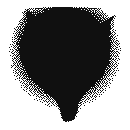The Worldview of Baroque
Interview with game designer Kazunari Yonemitsu
First and foremost, this game is designed to answer the question, "Why has the world become like this?" It isn't like other games in which you "save the world".
The reason the world has been distorted so is directly tied to the catastrophe of the "Great Heat Wave", but why did it occur? What series of events led to the Great Heat Wave? This is why we included a system in which you can gather clues through information spoken throughout the game. However, this means that some information will not be available depending on how the game has progressed, so some players may not be aware of certain details.
Therefore, it would really spoil the fun if we just laid out an explanation for everything in the game, so please try to figure it out on your own. Of course, you'll get to see a single conclusion during the ending.
However, the ending itself is not a grand finale in which everything is resolved. Perhaps I shouldn't talk about it too much, but the "distorted" nature of this game is basically a reflection of reality. You could say that while the game's world is distorted, it's no different from "this reality". That's why it doesn't end with "Everyone is at peace. Congratulations..." It's not a fairy tale - it's a story about reality.
However, the game would've been a bitter experience if there weren't any uplifting elements. That's why we added a little hope to the ending as to not upset the players (laughs).
If I were to give you a hint on how to unravel the mystery, the Order of Malkuth and the higher-ranking angels are directly connected to the cause of the global distortion, so you may want to pay particular attention to what they say and do. But keep in mind that Worker Angels and the Crypt Angel are amongst the lowest ranking members of the Order, so their understanding of the situation is limited.
The 3D, real-time, auto-generated dungeon system is, to put it frankly, the result of combining all of my favorite things. I loved "Rogue" and "Dungeon Master". When it comes to auto-generated dungeons in console games, there is the wonderful "Torneko's Great Adventure". After the release of "Torneko" on the SNES, many similar games came out. But it's nearly impossible to surpass "Torneko". So instead of being derivative, we wanted to make something new and engaging, with multi-layered dungeons, 3D, and a dark setting.
The first project to use this idea was entitled "A Life of Catching Grubs", a game about an adventure in a dungeon made by bugs. After many twists and turns, it eventually became the Saturn version of "Baroque".
The story of the Playstation version is basically the same, but I think it plays quite differently. The biggest changes are the number of levels within the Nerve Tower and the spawn rate of items. In the Saturn version, the size of each floor increases as you go deeper, but in the Playstation version, the size does not change much - however the total number of floors has increased by nearly ten. This was changed to increase the tempo after the mid-game. We then made items easier to find in the Playstation version. This was the trade-off for increasing the number of floors, and I also wanted players to think about item strategies relatively early in the game. In other words, I wanted players to think about which items to take and which to discard.
Then there's the post-game Hell Dungeon, which is a fun extra exclusive to the Playstation version. All the staff said "Let's make it, let's make it!" so we made it, but it's seriously difficult. Or at least I'm not able to beat it. Of course, some of the development staff who have utterly mastered the game managed to clear it. Unless you're really good at fighting or have raised your equipment to +99, you're going to have a rough time.
This isn't all that relevant to the game's backstory, but there are no official names for anything found in "Baroque". "Grotesque" can be read as ikei or igyou,* it doesn't matter which you prefer. There are two ways of naming each Grotesque, such as "Tower" and "Bubugel", but again, neither is the correct choice. Both are acceptable to use. Just like in the real world, the way you describe things changes based on the person and context.
*TN - Ikei and igyou roughly translate to "atypical appearance" and "strange or suspicious looking", respectively.
As a matter of fact, in the original drafts, it was planned that characters would refer to the same thing in different ways. For example, some people call the Angelic Insects "Littles" and others call them "Angelbugs". We eventually had about three different names for each individual concept, which was a mistake. This would have confused the player, so in the end we consolidated a lot of this terminology into unified names.
And yes, the reason for Grotesques having the names of tarot cards is because the Archangel is a tarot fanatic. Well, honestly it's a bit more complicated than that but in short, he forced their names to correspond with his tarot hobby. Only Grue didn't match up with any major arcana, so they're referred to as "waste" since Kato pukes them out.
As the game progresses, Neck Thing and the other inhabitants of the outside world begin to sink into the ground. This is due to the feelings of guilt they carry, but the nature of their sin is not immediately clear. Some of these people are easy to understand, but you'll never get any explanation for the Horned Woman.
Of course, that doesn't matter to the progression of the game, but I still came up with a reason for it. There has to be a reason she became buried, and I think it's interesting to think about why.
However, it is unlikely that becoming buried will save these people. Neck Thing certainly is happy to be buried, but honestly he's just escaping from reality. It doesn't mean that his sins will disappear into the soil.









